A technical post this time.
Some more information has been released on the E-8 based Lunar Telescope. As usual I’m using computer translation, and there may be errors. I’m grateful for any corrections you may have.
Click Here for the first article, with a large translated diagram.
On with the documents!
This is the title page, and apart from the signatures, it contains the terms of reference:
TERMS OF REFERENCE:
for the development of an automatic Lunar Astrophysical Observatory to perform astro-cosmic observations in the ultraviolet X-ray region of the spectrum, to survey the Stolitsa (?) and to measure the angular diameters of radio sources.
The work is carried out according to the Decree of the Central Committee of the CPSU and the Council of Ministers of the USSR № 899-314 of November 19, 1968, and the decision of the MITS on CI at the Academy of Sciences of the USSR of December 15, 1968.
To remind you, E-8 refers to the system used to land Lunokhod’s and sample return probes on the Moon.
There’s a lot of text about the obvious advantages of observing from the Moon in this way, these include:
Emulating the USA in observing at new wavelengths.
Advantages of a stable base, as opposed to observing from Earth orbit.
Extensive use of hardware that has already been developed. (Much is made of this point, they are selling the observatory as low cost, low risk).
The telescope would be 500 or 350 mm diameter, and have an f-ratio of about 2.5. Additionally it would be equipped with:
An ultraviolet spectrograph
Ultraviolet photometer
4 X-Ray detectors
Guide scope
Memory storage
A thermal control system, similar to that needed for the Lunokhod
Moving on:
IV. BASIC FACILITY REQUIREMENTS
I. Some requirements for the layout of the E8-3 facility
The basic requirements for the layout of the E8-3 facility are determined by the necessary fields of view for the scientific apparatus.
A. Requirements determined by the LAO scientific instrumentation.
Getting any elements of the E8-3 structure in the field of view of the Earth sensor /EZ/ is inadmissible: the presence of objects illuminated by Solitz (?) in the field of view of the EZ can significantly reduce the accuracy of pointing at the Earth. In principle, it is possible to install the Earth sensor above the middle belt of the telescope, in the area of the secondary mirror mounting. However, such an installation is extremely inappropriate, both from the point of view of weighting the upper part of the telescope, and because of increased landing overloads acting on the Earth sensor due to the removal of its axis from the centre of gravity of the E8-3 volume.
When conducting scientific observations, the telescope's field of view is determined by the following restrictions: the telescope's optical axis must not tilt to the Moon-Earth direction at an angle less than 75%. Thus, the theoretical telescope viewing area is limited, on the one hand, by the outer surface of a cone with an angle at the apex of 150%, built around the Moon-Sol axis, and, on the other hand, by the local horizon. Additional small limitations of the telescope's field of view caused by the elements of the EZ-3 structure falling within the theoretical field of view are admissible, but m.p.7I9cc (?)
This describes the limitations on exactly where the telescope can be aimed.
And now the best bit…
A table of planned spacecraft!
Apparatus for returning Lunar soil, No 406, Dec 1969
Artificial Lunar satellite for gravity and elevation mapping studies, item 202, Jan 1970
Apparatus for returning Lunar soil, No 407, Feb 1970
Regular lunar rover E-8 (development of the lunar rover control system of the E-8-2 object), Item 205, March 1970
Apparatus for returning Lunar soil, No 408, Apr 1970
Artificial Lunar satellite for gravity and elevation mapping studies, item 409, July 1970
Mobile borehole analysis station, No 206, Aug 1970
Mobile spacecraft for moving astronauts on the Moon - object E-8-2
(LKI stage), and researching over-the-horizon radio communication, No 207, Sept 1970
Artificial Lunar satellite for gravity and elevation mapping studies, item 410, Dec 1970
Mobile spacecraft for moving astronauts on the Moon - object E-8-2
(LKI stage), No 411, Jan 1971
Mobile spacecraft for moving astronauts on the Moon - object E-8-2
(Standard sample), No 412, Apr 1971
Mobile spacecraft for moving astronauts on the Moon - object E-8-2
(Reference sample), No 208, July 1971
Apparatus for returning Lunar soil is clearly a “Luna 16” style mission.
And items 8, 10, 11 and 12 are all crewed versions of the Lunokhod.
For those unfamiliar, the Lunokhods were key to the N1-L3 crewed Moon landing program, in several ways. The roles included:
Survey landing sites in detail.
Act as landing beacons for accurate landings, in the best spots.
Survey and check the spare lander, deposited near the main landing site
Ferry a potentially injured cosmonaut to the spare lander.
While the use of Lunokhods in the crewed program has been well known for some time, this is the first time I have seen a source document with any specific details.
This edition’s Cool Link:
Energia-Buran at the Museum of Cosmonautics. A huge site, (in Russian), with loads of great photos and stories told by the people who worked on the project.
http://energy-buran.kosmo-museum.ru
This edition’s cool visual:
A short video showing the “Tin Hat” test version of the Lunokhod being put through its paces.
This edition’s 7 day download:
This time it’s a PDF version of a document that was the basis for this edition, with info on the E8 proposals, and the telescope. I have also extracted pages, and run them though Yandex Image Translate for you.
Remember, the download will only work for 7 Days.


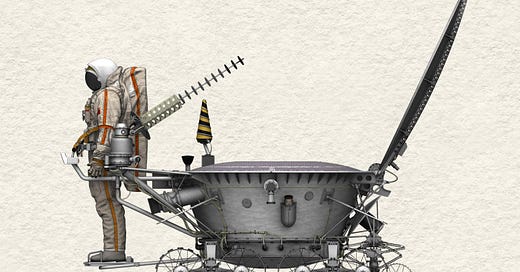


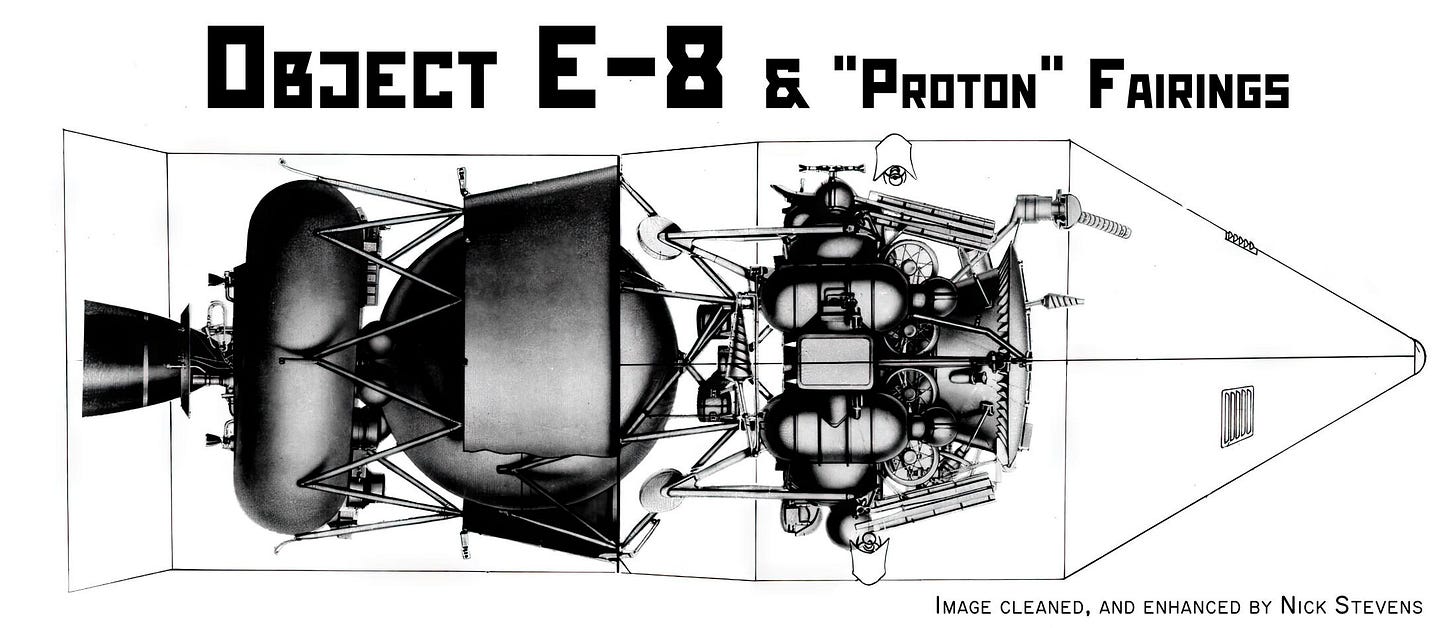
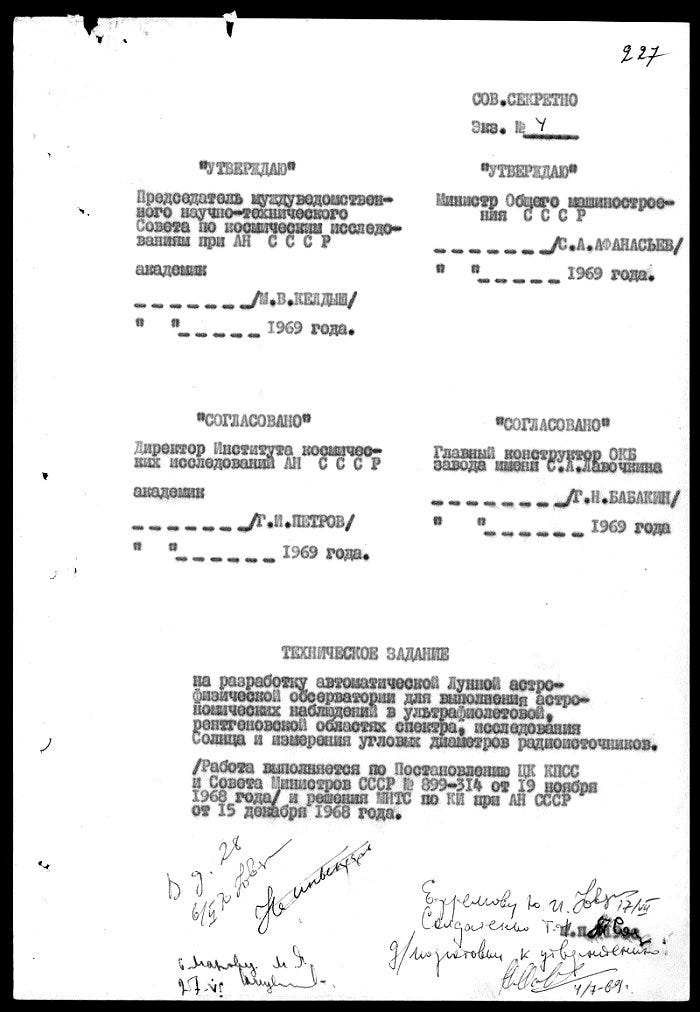
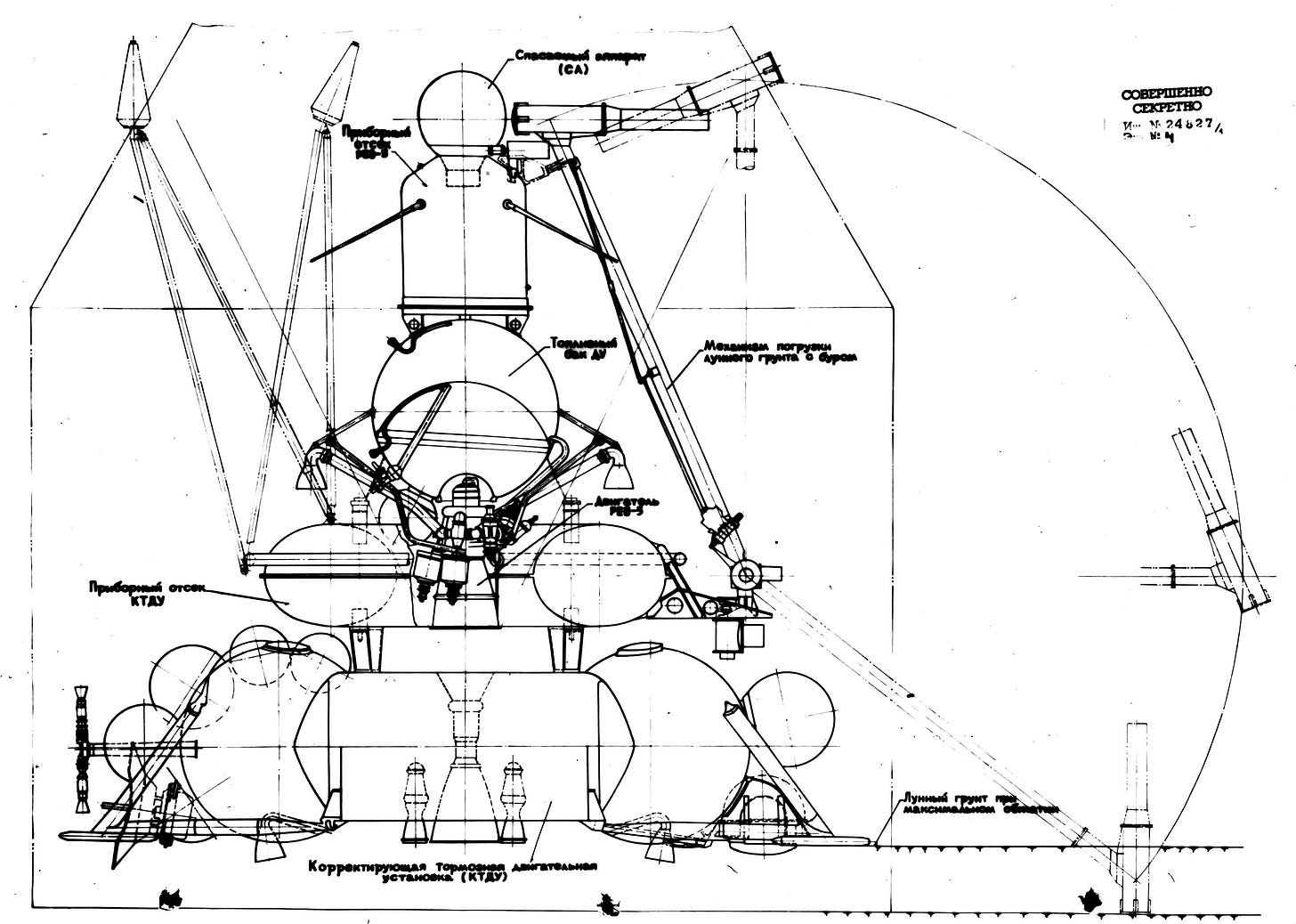
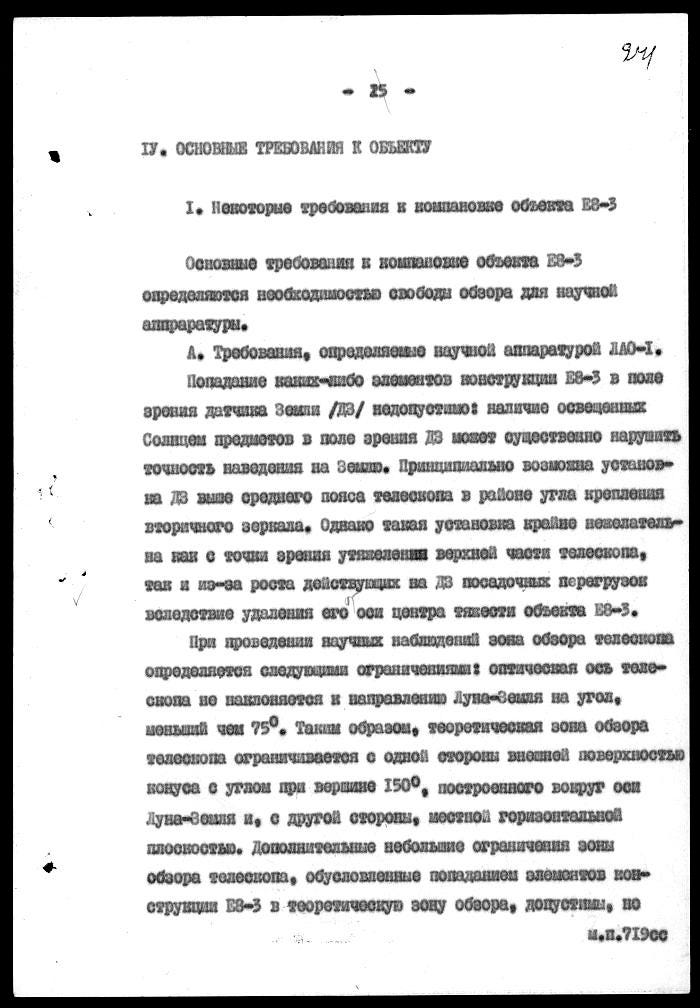
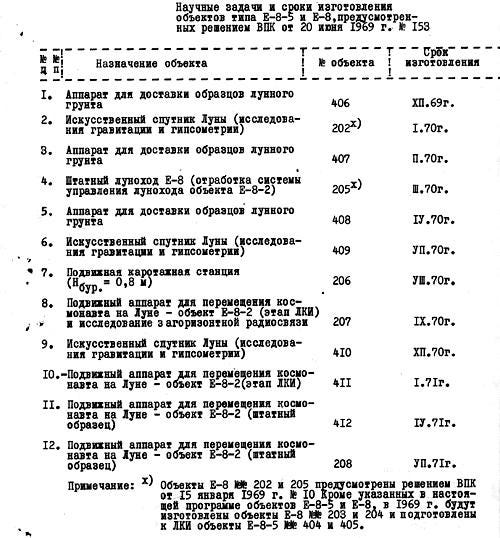
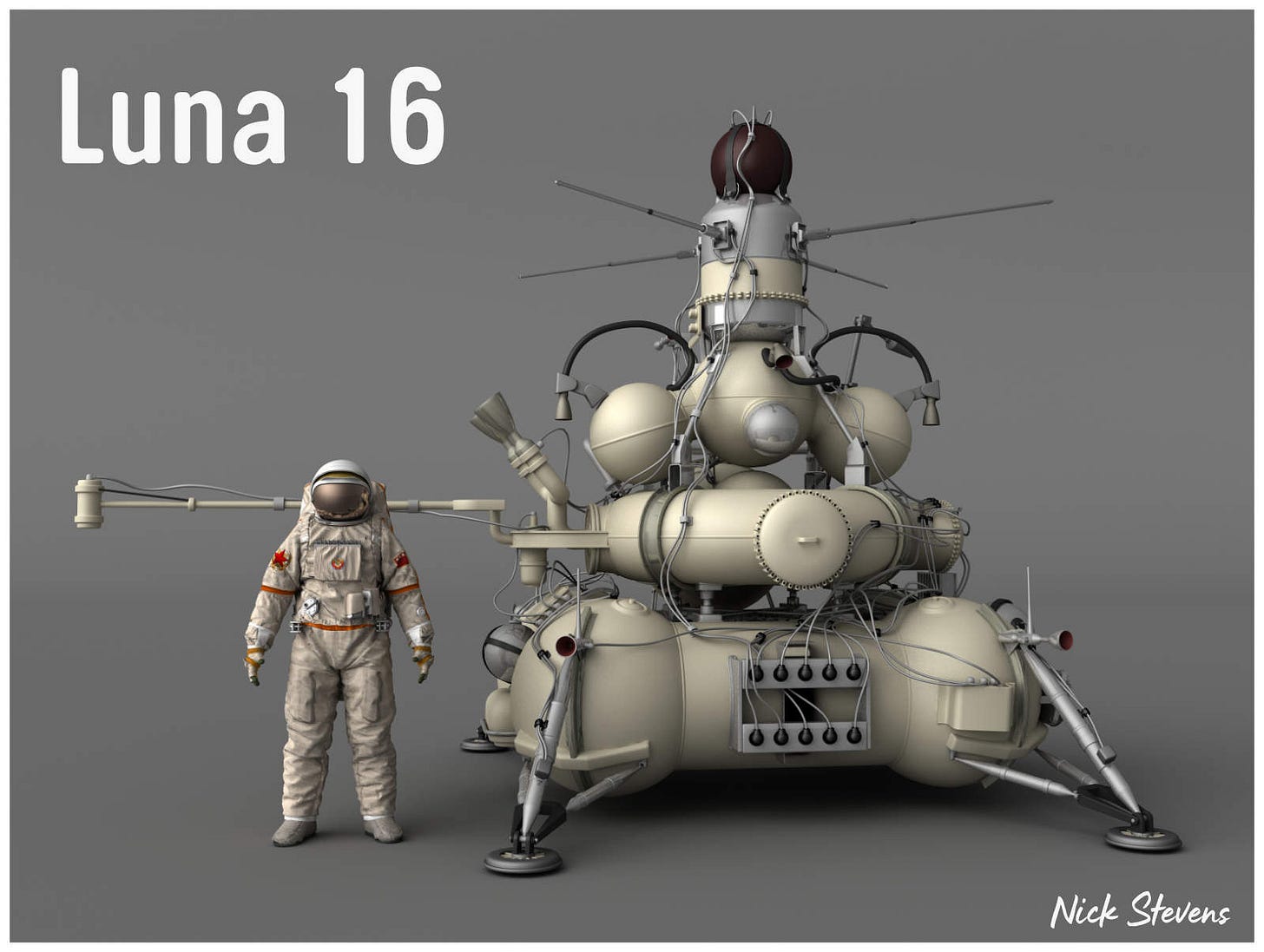
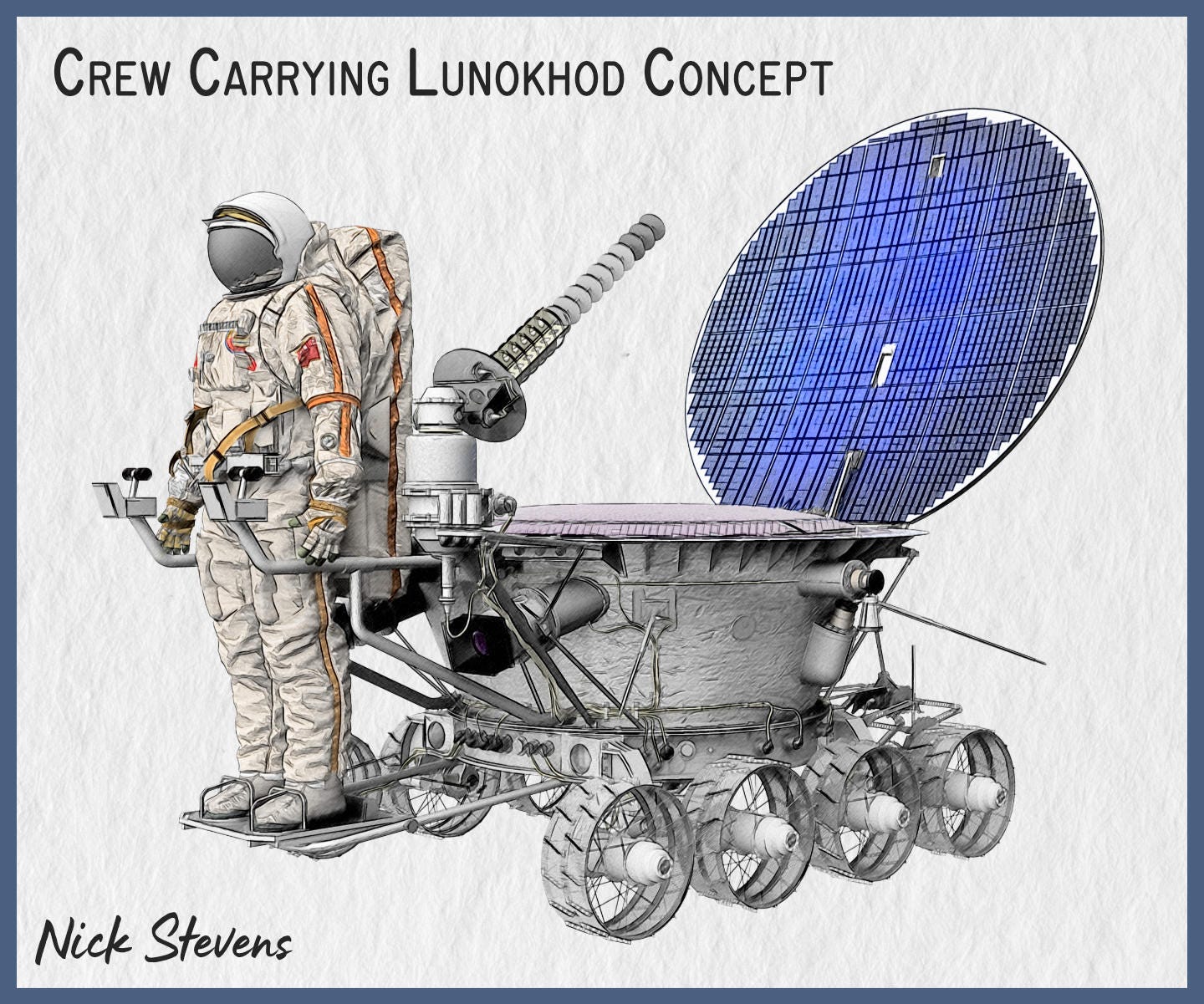

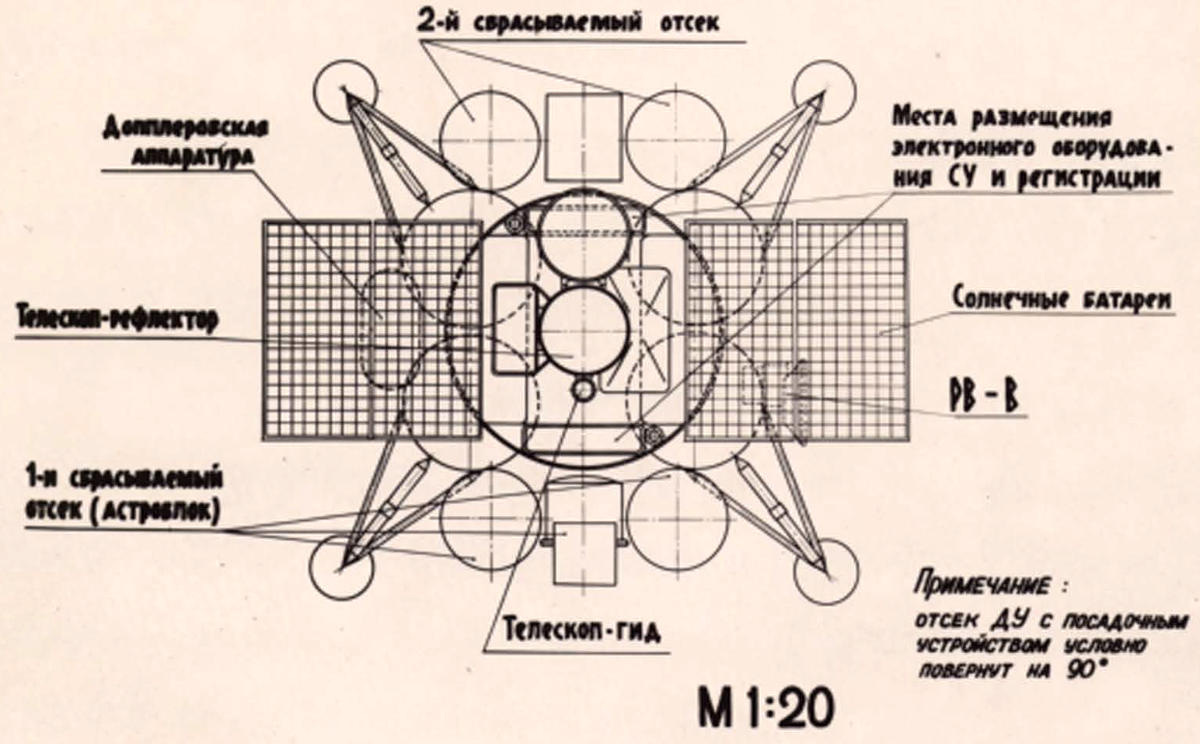
There was an Apollo lunar surface telescope. Small aperture. There have been other proposals for lunar surface telescopes. But they don't seem to offer any real advantages over space-based telescopes. At least part of the argument early on was that they could be more stable than a space-based telescope. But the stability problem for space telescopes was solved by the early 1970s.
A bit off-topic, but I've been thinking of the TLK recently, (the 2-man heavier version of the LK) but how exactly would it be launched? I'd assume it's significantly heavier than the LK, and knowing how little of a margin the N1 had, what modifications would the rocket require? I doubt it'd use a double launch, and hydrolox seems a bit too far-fetched - I could be wrong though! Thoughts?